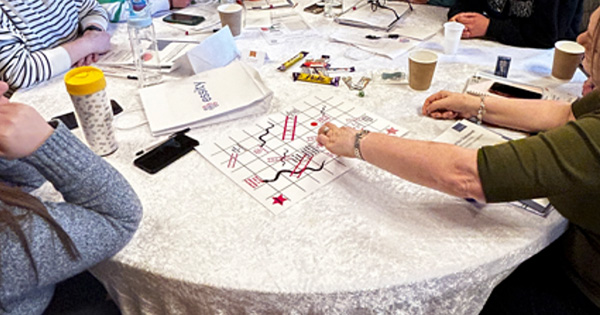How do we make skin a priority for everyone —everywhere? Have we made it too special and too complicated? We all have our own special groups and pathways and guidelines and all kind of other things, whether that is for pressure ulcers (PU), leg ulcers, diabetic foot ulcers or skin tears but where is the commonality — aren’t we all trying to achieve the same thing — maintain healthy skin?
Are we confusing healthcare professionals with our oh so specialist and targeted messages, our wealth of clever acronyms and why ‘our wound type’ is the one to be concerned about?
Could we all do the same? Of course I am going to propose we all follow a PUs model but hang on, bear with me and see what you think.
Doesn’t aSSKINg apply to all our wounds? Haven’t they all got risk factors that we assess? Don’t they all need us to assess the skin and keep it clean dry and well hydrated? Doesn’t the surface(s) play and important role whether that is an offloading device a mattress, a compression bandage or protecting vulnerable skin from sharp surfaces? Keeping patients moving is such an important part of all healthcare why make it something specific, keeping them moving prevents deconditioning, loss of muscle mass, reduced mood, it prevents PUs, it increases blood flow, prevents complications like chest infections, it’s a really fundamental aspect of what we do! What about managing increased moisture and incontinence — so we need to make that a specific element — isn’t it just common sense and good practice? The same as monitoring nutrition and hydration, these are not specific to PU prevention, these are about keeping a patient well, returning them to independence (or as much as we can). And surely giving information is the same, whether it is sharing information across a healthcare team, creating good clinical records, delivering education to patients or indeed staff or carrying out amazing health promotion campaigns — shouldn’t we all have the one really key message — “keep the skin safe, keep it clean, dry and well hydrated”. Maybe the strap line could be Love Great Skin (yes I know it’s another PU reference, but isn’t it true? )
For Stop the Pressure Day this year we are going with the theme of Every Contact Counts and doesn’t it just, not just every clinical contact (so who is seeing the patient and when) but every time someone or something touches the skin, that really matters, it can hurt or heal, incontinence or emollient, a sharp edge or an offloading boot. Everything in contact with the skin matters.
So have a look at my Table 1, see what you think! Let’s prevent as much skin harm as we can, just imagine if we all did the same in all the blue columns there’s only a small bit extra in the specifics.
We have a common objective to prevent a wound or wound complication such as delayed healing, we could help by making it simple for staff to do.
This is not a complete or accurate table, but just think if you populated it fully, if we listed all the risk factors for each wound type. How many would be common? Multimorbidity, Immobility, poor blood supply, poor sensation, obesity, diabetes….. how many of the actions would be the same? Is a skin assessment any different for any of these?
Just one last thought, couldn’t we just assess for frailty… I’ll leave that with you to ponder on.
P.S. if you really think it’s too pressure ulcerish we could just change it to RiSSKINg (risk assessment works every bit as well as Assess risk) and have a whole new way of working!






